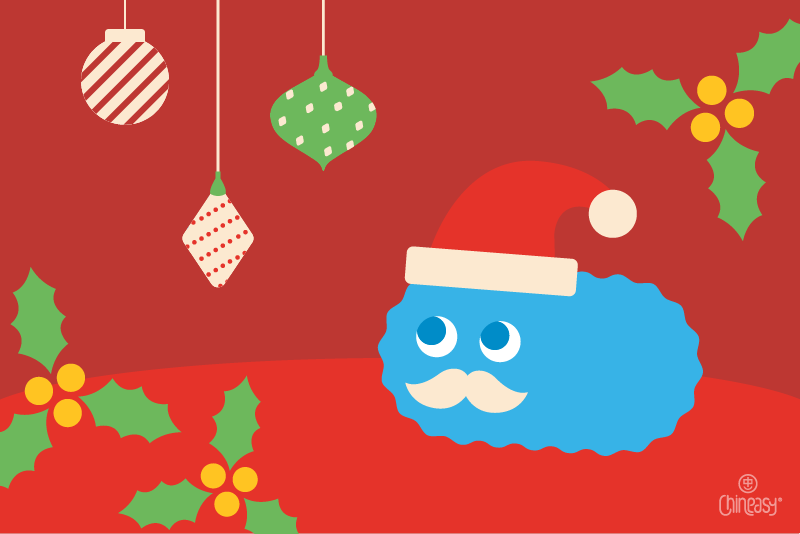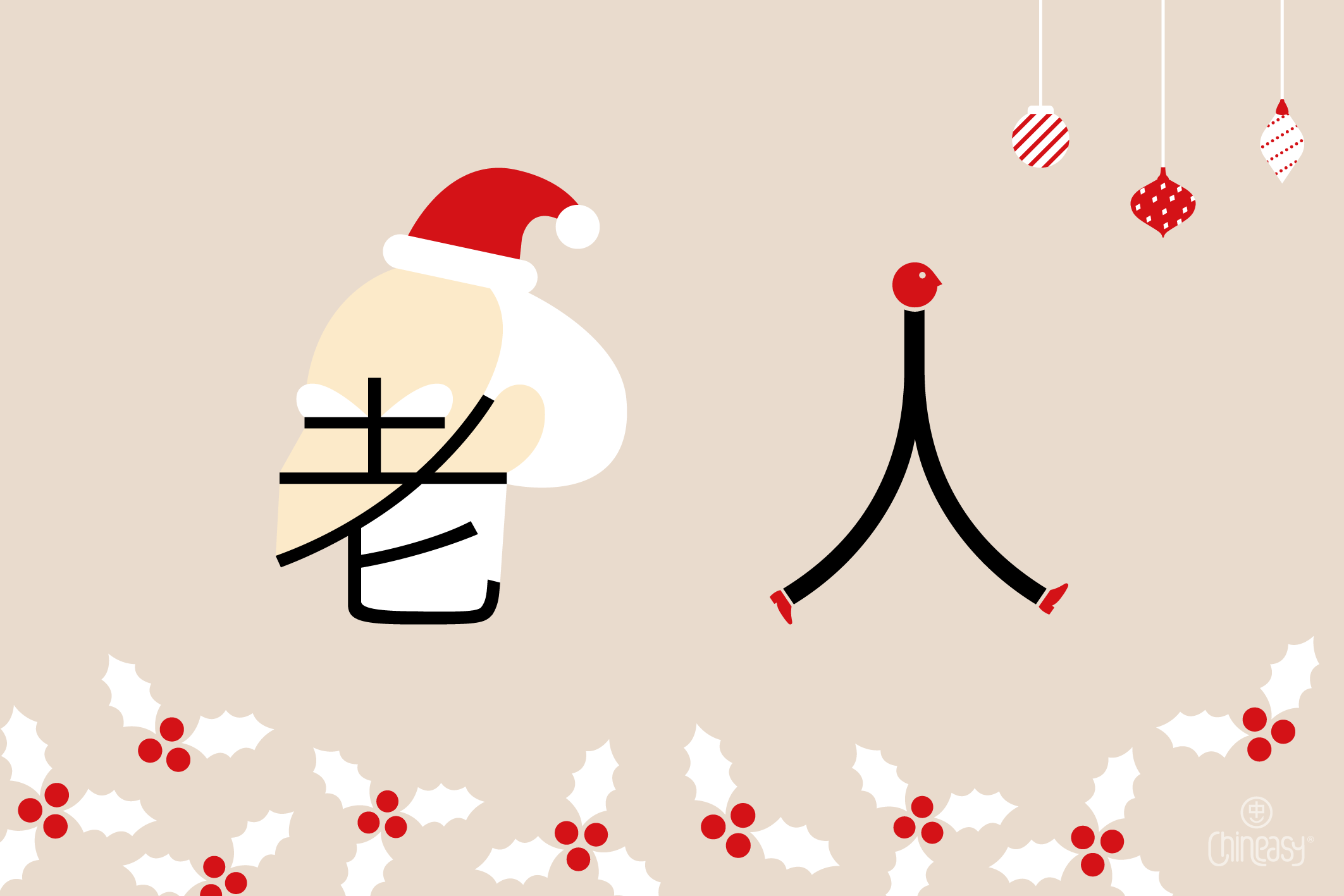As the new school year begins, why not boost your Chinese vocabulary with some essential stationery terms?
From pens to pencil cases, this quick guide will give you 10 must-know Chinese words to confidently navigate any stationery aisle.
Whether you’re preparing for a study abroad program, helping your children with their Mandarin lessons, or simply wanting to expand your vocabulary, learning these essential Chinese words for stationery items will give you a great head start.
So, let’s dive in!
Pen 筆/笔
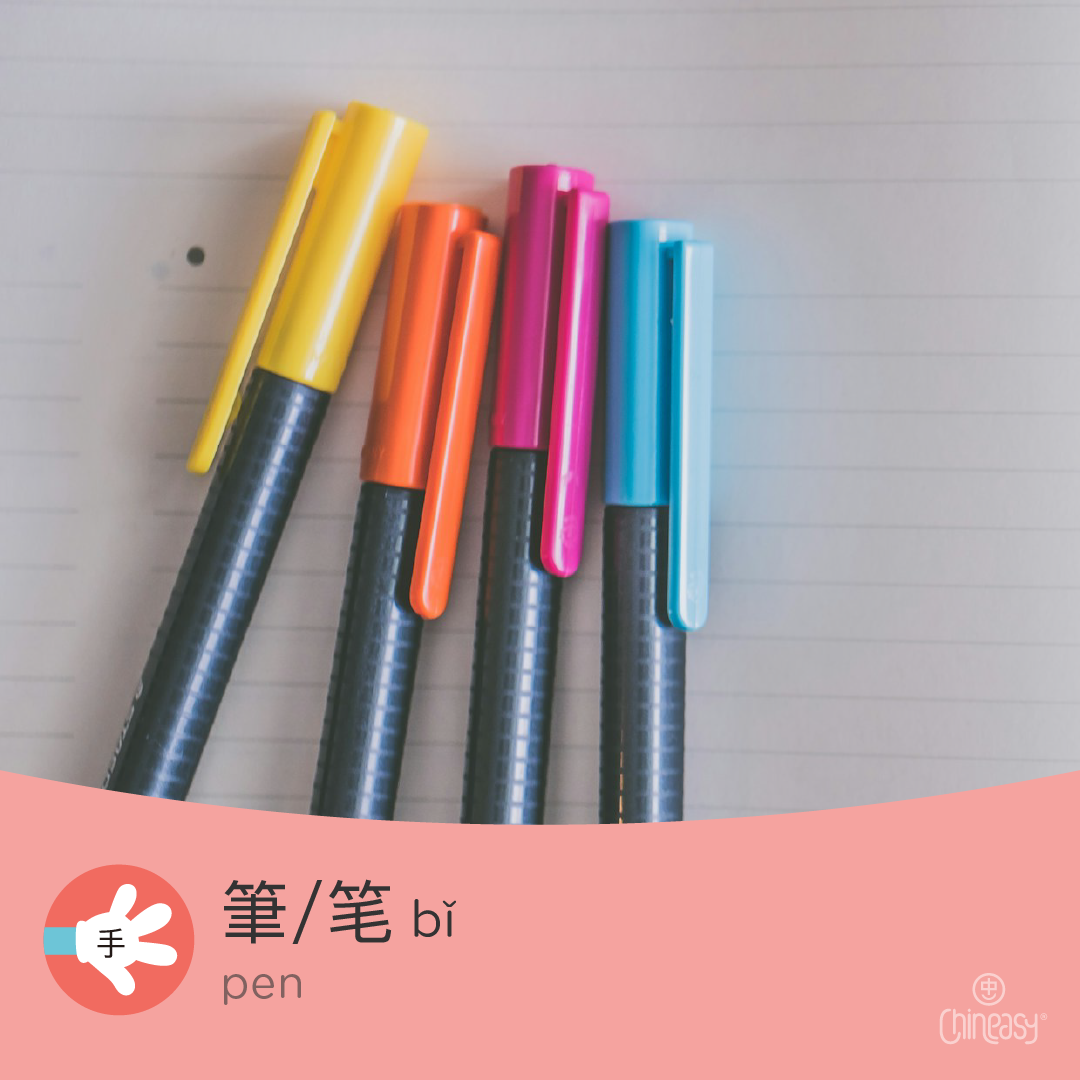
The Chinese character for “pen” is 筆 (traditional Chinese) or 笔 (simplified Chinese). It’s pronounced as “bǐ.“ The tone is the third tone. When it comes to a Chinese third tone, keep your voice low and steady to ensure a more accurate pronunciation.
The character 筆 is composed of two parts: 竹 (zhú), meaning “bamboo,” and 聿 (yù), representing a brush or writing tool. This reflects the historical use of bamboo in making writing instruments in ancient China.
A pen is an indispensable tool in any student’s school supplies. Whether you’re taking notes, writing essays, or drawing diagrams, a reliable pen is essential for expressing your thoughts clearly on paper.
Pencil 鉛筆/铅笔
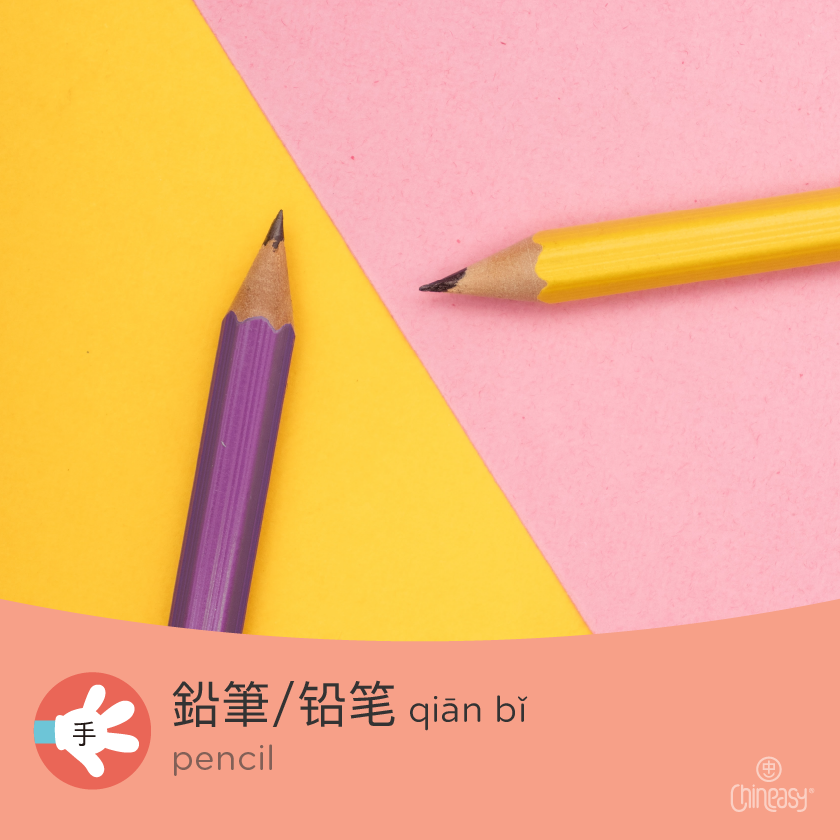
Are you a pen (筆/笔; bǐ) or a pencil person? The age-old stationery debate has definitely puzzled many. But it’s always useful to know both in Chinese.
鉛筆/铅笔 (qiān bǐ) is the Chinese word for “pencil.” 鉛/铅 (qiān) means “lead,” which refers to the chemical substance, and 筆/笔 (bǐ) means “pen,” which you just learned.
Here’s a bonus word: 鉛筆刀/铅笔刀 (qiān bǐ dāo), literally “pencil knife.” It translates to “pencil sharpener” — a must-have tool to keep our pencils sharp.
Ever wondered why most kids start with a pencil (鉛筆/铅笔) instead of a pen (筆/笔) when learning to write?
Using a pencil allows kids to build a strong foundation in handwriting while giving them the freedom to make mistakes and erase them easily.
Mechanical Pencil 自動鉛筆/自动铅笔
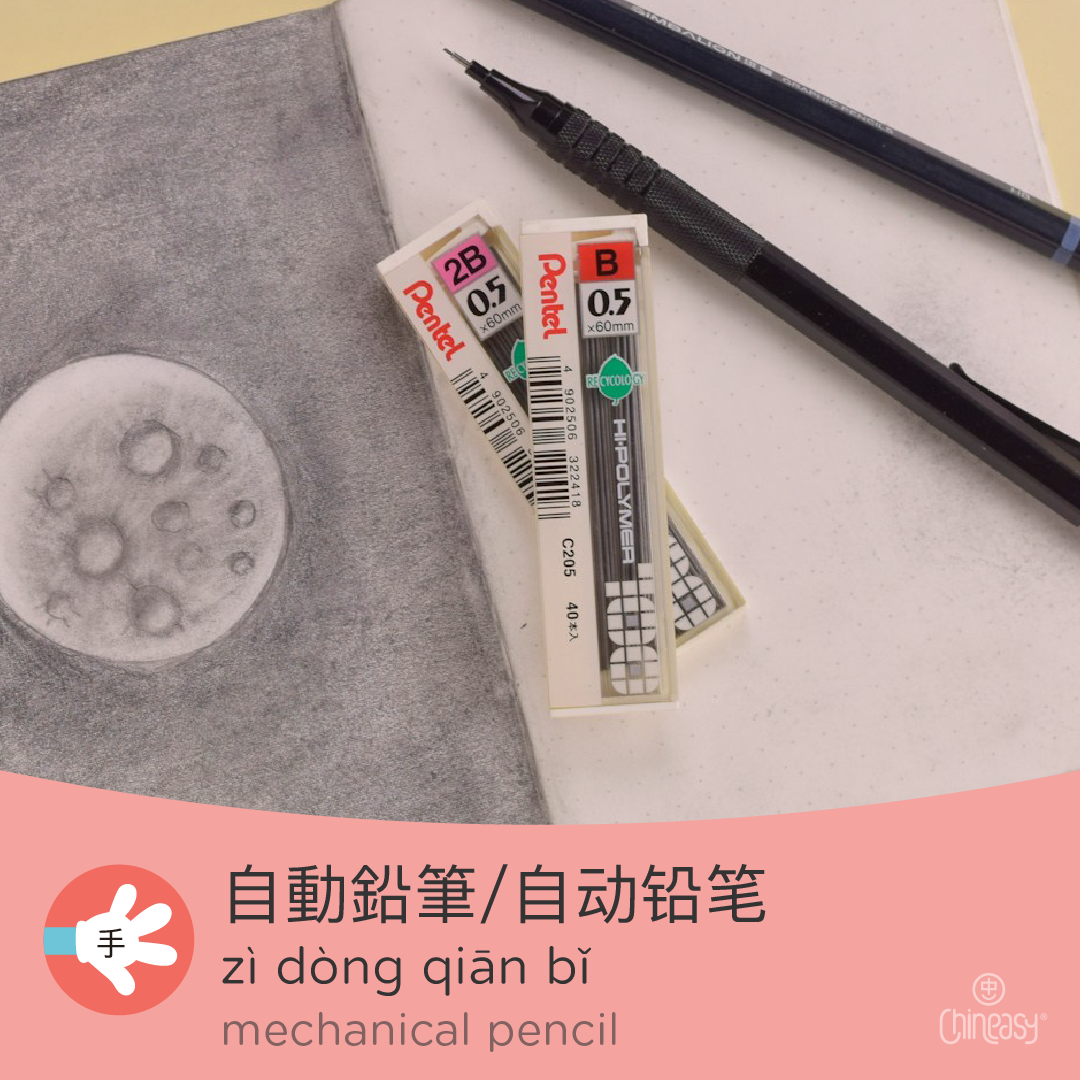
Another classic debate in the stationery world is between mechanical pencils and wooden pencils (鉛筆/铅笔).
The consistency, convenience, and cleanliness of mechanical pencils often make them the preferred choice for taking notes.
However, when it comes to sketching, wooden pencils offer more uniqueness and character to your drawings.
Fortunately, there’s no confusion when it comes to the Chinese word for “mechanical pencil.” Simply add the term 自動/自动 (zì dòng), meaning “automatic,” before 鉛筆/铅笔 (pencil).
Together, 自動鉛筆/自动铅笔 (zì dòng qiān bǐ) translates to “mechanical pencil” or “propelling pencil” in British English.
In a Chinese stationery store, if you ask for 鉛筆/铅笔, the shopkeeper will likely assume you want a wooden pencil. So, be specific and ask for 自動鉛筆/自动铅笔 if you’re looking for a mechanical pencil.
Ballpoint Pen 圓珠筆/圆珠笔
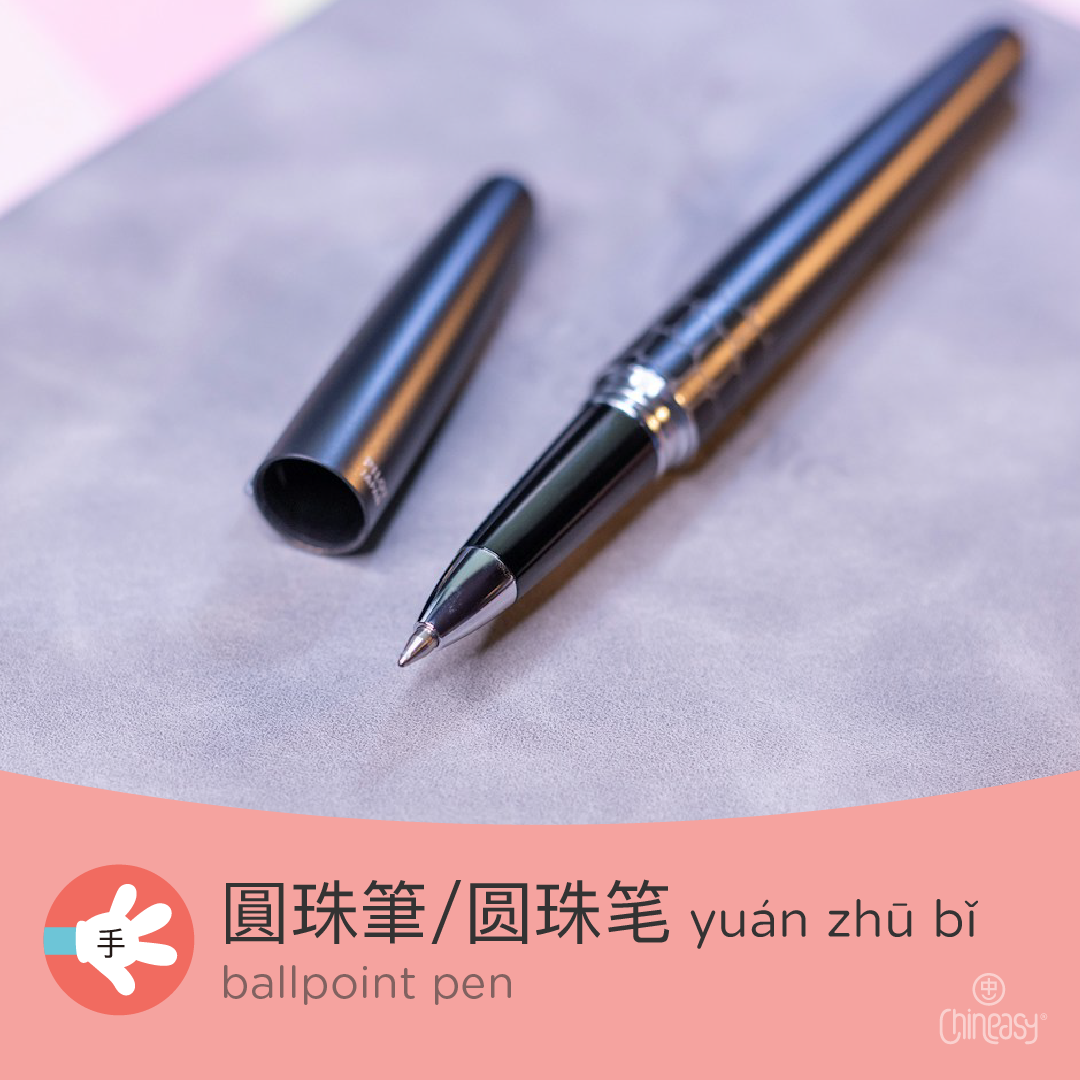
When it comes to reliable and smooth writing, a ballpoint pen is a go-to choice for many. The Chinese word for “ballpoint pen” is 圓珠筆/圆珠笔 (yuán zhū bǐ).
- 圓/圆 (yuán) means “round” or “circular,” referring to the ball in the pen’s tip.
- 珠 (zhū) means “pearl” or “bead,” further emphasizing the round shape.
- 筆/笔 (bǐ), as you’ve learned, means “pen.”
Together, 圓珠筆/圆珠笔 literally means “round bead pen,” perfectly describing the ballpoint mechanism.
Ballpoint pens are widely used for their convenience and durability. Their ink tends to dry almost instantly, so they’re less likely to smudge on the paper than other types of pens.
Whether you’re signing documents, jotting down notes, or doodling in your notebook, having a 圓珠筆/圆珠笔 in your stationery kit is a must.
Highlighters 螢光筆/荧光笔
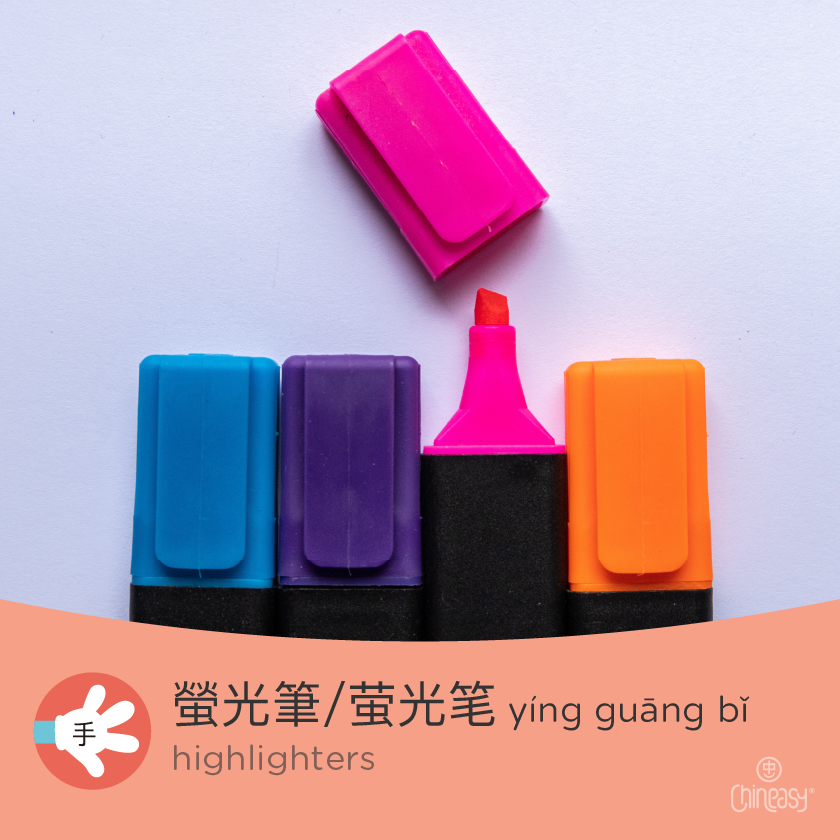
Highlighters are essential for emphasizing important information in textbooks, notes, and documents.
To say “highlighter” in Chinese is 螢光筆/荧光笔 (yíng guāng bǐ).
- 螢/荧 (yíng) means “fluorescent” or “glow.”
- 光 (guāng) means “light.”
- 筆/笔 (bǐ), as you’ve learned, means “pen.”
So, the literal meaning of 螢光筆/荧光笔 is “fluorescent light pen,” highlighting its function.
Highlighters come in various bright colors and are perfect for drawing attention to key points, making studying and reviewing more efficient.
Keeping a few 螢光筆/荧光笔 in your stationery collection ensures you can always mark the important stuff in style.
Eraser 橡皮
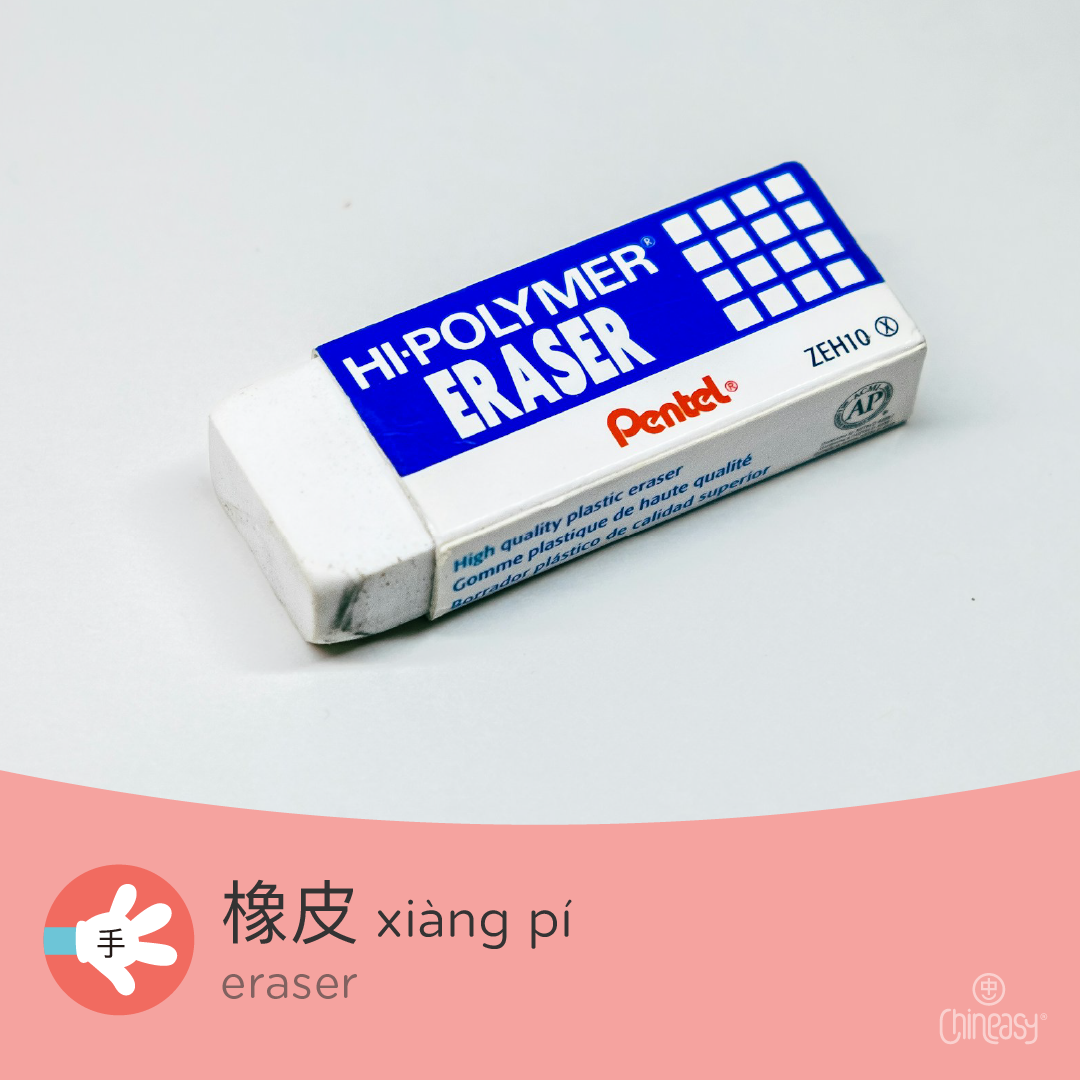
An eraser is an indispensable tool for anyone who uses wooden pencils (鉛筆/铅笔) or mechanical pencils (自動鉛筆/自动铅笔) to correct mistakes and make adjustments while writing or drawing.
It’s called 橡皮 (xiàng pí) in Chinese.
- 橡 (xiàng) refers to “rubber.”
- 皮 (pí) means “skin.”
Together, 橡皮 makes sense, given the material used for erasers.
Another term you might come across is 橡皮擦 (xiàng pí cā), where 擦 (cā) means “to rub” or “to wipe.” This term emphasizes the eraser’s function of rubbing out pencil marks.
Sticky Notes 便利貼/便利贴
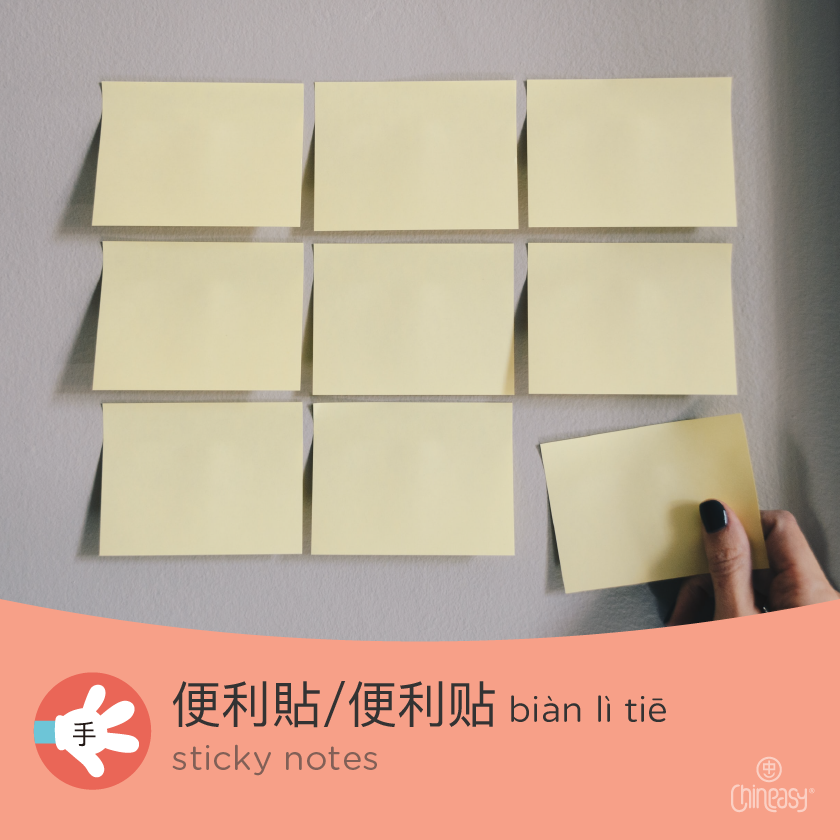
Sticky notes are incredibly handy for jotting down quick reminders or marking important pages. The Chinese word for “sticky notes” is 便利貼/便利贴 (biàn lì tiē).
- 便利 (biàn lì) means “convenient.”
- 貼/贴 (tiē) means “to stick” or “to paste.”
便利貼/便利贴 literally translates to “convenient to stick,” which perfectly describes their function.
In the classroom, teachers often encourage students to brainstorm ideas and write them down on their sticky notes (便利貼/便利贴). So that students can stick their notes on a board and share their thoughts with their peers, fostering a collaborative learning environment.
Scissors 剪刀
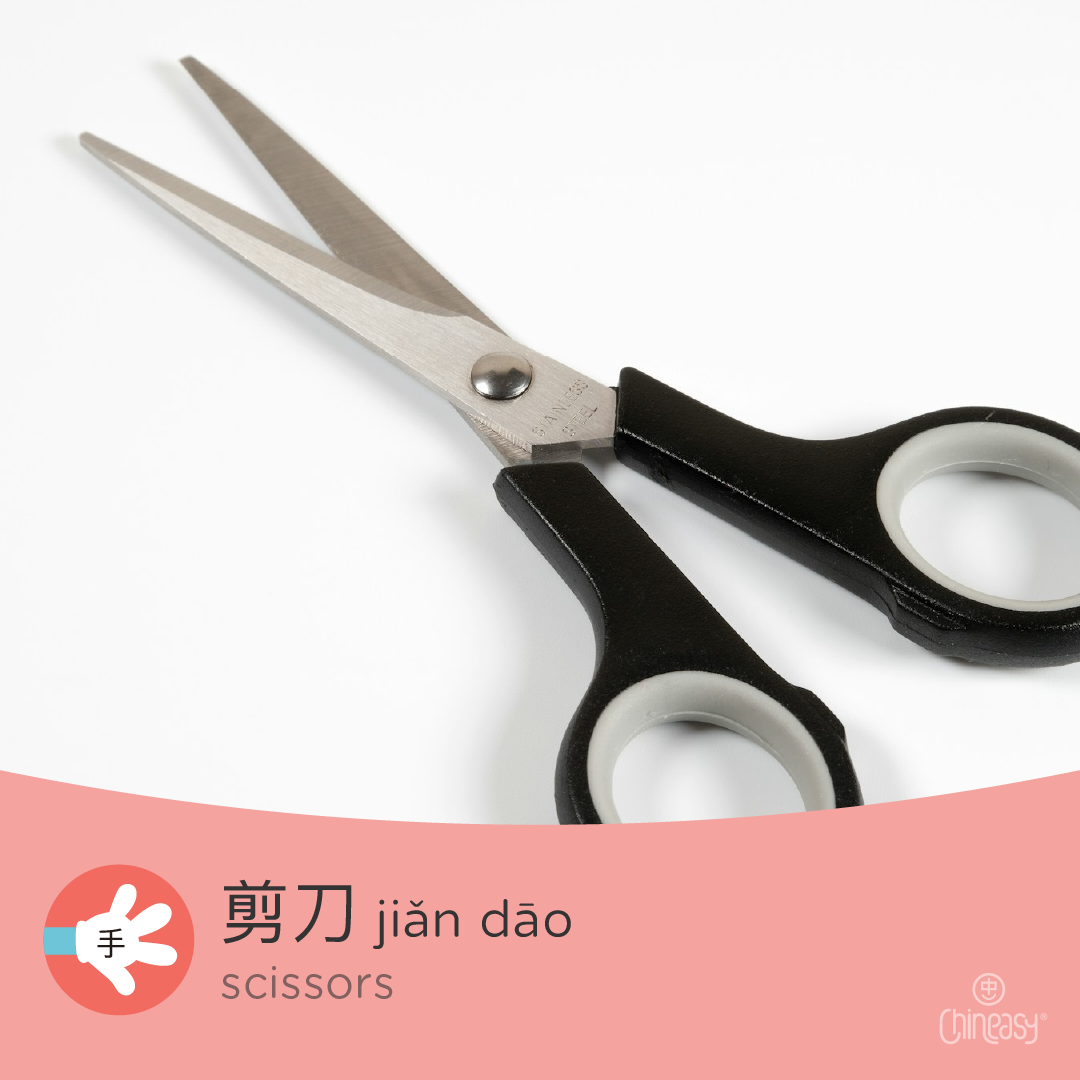
Scissors are a fundamental tool for cutting paper, fabric, and various materials.
剪刀 (jiǎn dāo) is the Chinese term for “scissors.”
- 剪 (jiǎn) means “to cut.”
- 刀 (dāo) means “knife.”
Combined, 剪刀 describes a tool that cuts like a knife.
When it comes to your handcraft lessons, scissors (剪刀) might be more important than other more standardized stationery items. However, make sure you handle scissors with care to avoid incidents.
Paper Clip 回形針/回形针
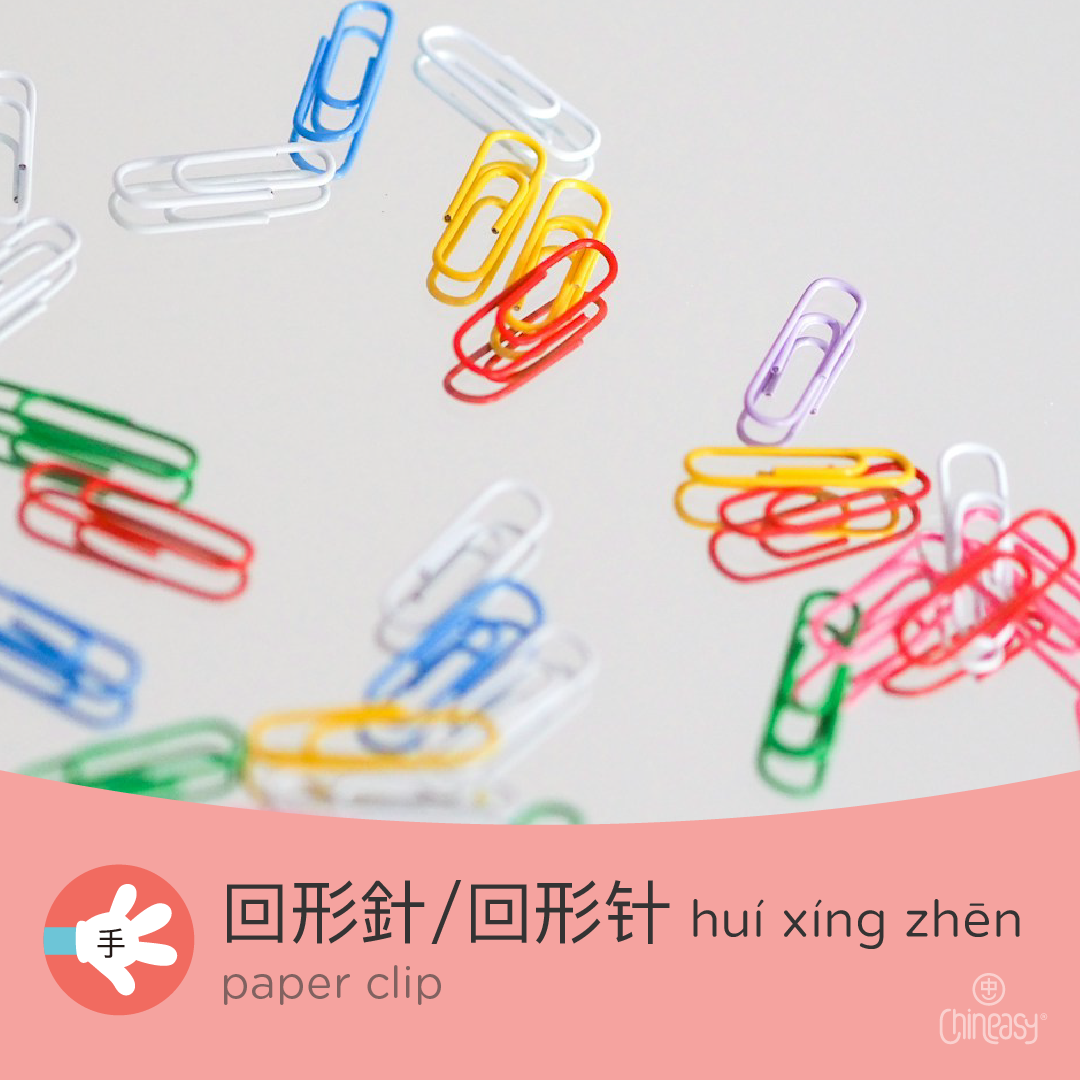
Paper clips are simple yet indispensable for keeping papers organized. The Chinese word for “paper clip” is 回形針/回形针 (huí xíng zhēn).
- 回形 (huí xíng) means “loop shape.”
- 針/针 (zhēn) means “needle.”
Together, 回形針/回形针 translates to “loop-shaped needle,” aptly describing the appearance and function of a paper clip.
Keeping a few paper clips (回形針/回形针) in your stationery kit helps you stay organized and tidy.
Pencil Case 文具盒
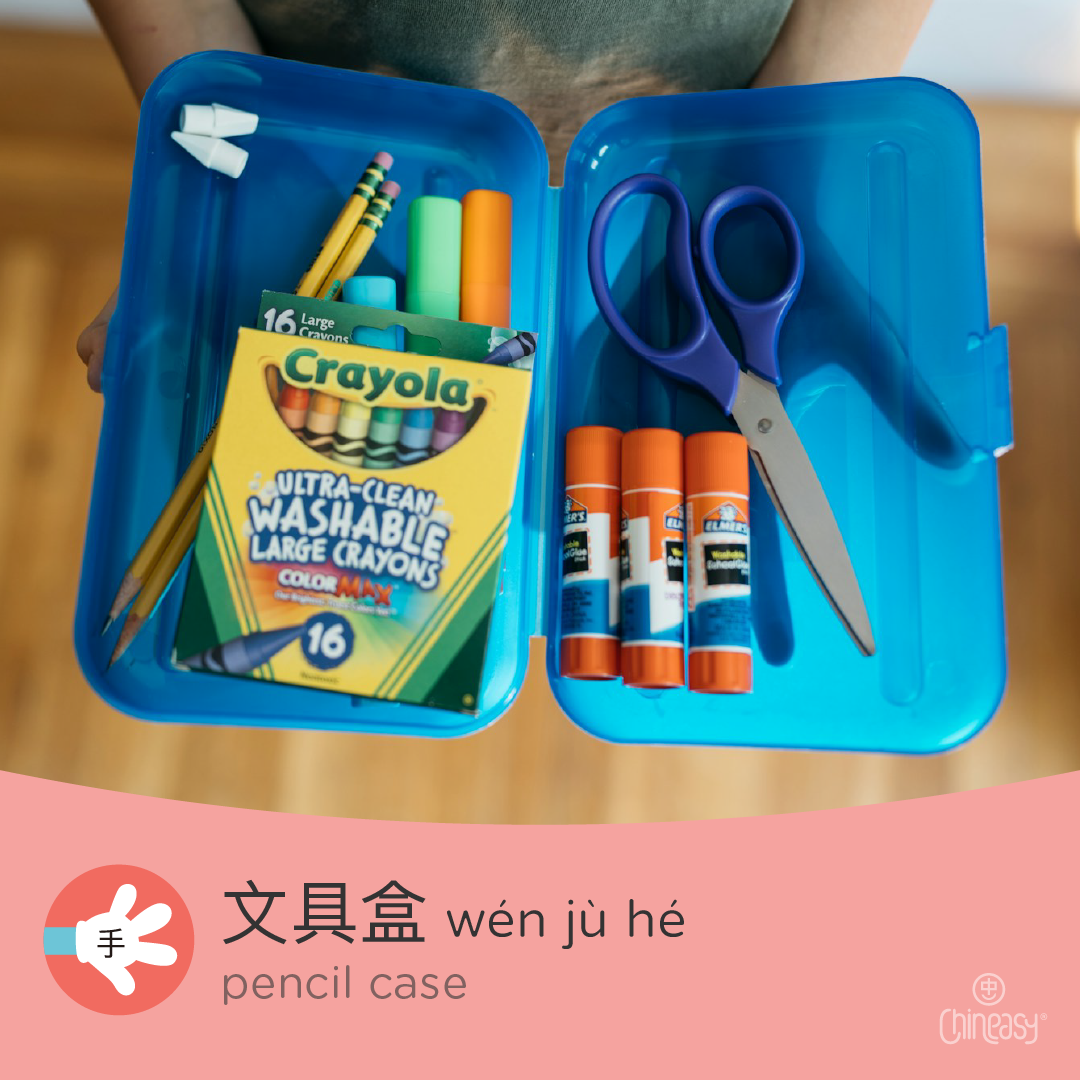
A pencil case is essential for storing your pens, pencils, erasers, and other stationery items. The Chinese word for “pencil case” is 文具盒 (wén jù hé).
- 文具 (wén jù) means “stationery.”
- 盒 (hé) means “box.”
An alternative term is 鉛筆盒/铅笔盒 (qiān bǐ hé), where 鉛筆/铅笔 means “pencil” and 盒 means “box.”
Whether you call it 文具盒 or 鉛筆盒/铅笔盒, having a pencil case helps keep your stationery organized and easily accessible.
Now that you’ve learned these 10 essential Chinese words for stationery items! Try using them next time you go shopping for school supplies. Say the Chinese word aloud when you hold your favorite items, and practice regularly to commit these new terms to your long-term memory.
Deliberate practice is the key to mastering a new language. Happy new school year, and happy studying!
Credit: Photos courtesy of Unsplash.
